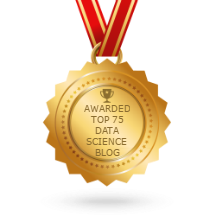- Compute distance in every pair of cluster
- Merge nearest ones until number of clusters = number of clusters needed
- Entire process can be represented as dendrogram
- At the end of the algorithm dendogram is plotted
Measuring Distance between clusters
- Single (Minimum Distance between two pairs one from each clusters)
- Complete (Maximum between two pairs one from each clusters)
- Average (Average of all possible pairs)
Happy Learning!!!











No comments:
Post a Comment